
Holy man! Can you believe it? As of today (May 22), school’s out for summer here in our part of Georgia.
Memorial Day’s yet to be observed (meaning we shouldn’t even officially be wearing white shoes, right, you all?). Yet the azaleas have faded, and the oak leaf hydrangeas are popping. The pool has opened for the season, its renovations fresh, its water still cool. Kids’ squeals echo stridently off the cement. Moms and dads share their kids’ excitement. Yay for summer! At the same time, a grimace (or an occasional outright declaration) gives away that nagging feeling shared by many in parental silence: “Heaven help us all!”

This morning I had the privilege of taking one last lovely walk to the park to see my grandson and some neighbor kids off to school for the end of the 2018-19 academic year. It was last call for the school bus...until next fall, of course. The kids were bouncing off the sidewalk. (Well, not above. That pic is the second-to-last day, when they were slightly more contained.)
On this last morning, freedom was mere hours away. Forecasts of their summer journeys varied. One family was preparing for a move to Savannah. (I was touched that Ms. Roxanne, the bus driver, brought them a parting gift.) Inevitably, somebody mentioned their summer plans involved a trip to the beach. I’m not sure which beach. The Florida Panhandle is a popular destination.
Now I, too, love the beach, particularly the Panhandle. I love it in the spring or fall, not in the God awful dog-breath heat of summer. But here’s an amazing truth: Almost everyone else I know loves to do Florida in summer. ‘Tis the season, they’ll say while forking over a hefty premium. My own daughter and son-in-law are among these blazing-sun-and-sand worshipers. Power to ‘em. Maybe it’s my Michigan blood, but I just can’t do it. Not even for a week ocean-front with the grands. I. Just. Can’t.

It’s not that summer wasn’t once my favorite season. It was, back when I lived in God’s country during my formative years. Sally Hanes, one of my dearest junior high friends, would invite me to her family’s cottage on Hardwood Lake for a week or two each summer. During the early years of my visits, the Hanes’ cottage was small and rustic, with no indoor plumbing. We used the outhouse without a fuss, and we gladly pumped water from the creaky well for use in the kitchen at meal time. Over time, the Hanes family added indoor plumbing and a sleeping porch, and they converted the uphill garage into a bunk area with beds and an old piano.
God, how I loved my times at Hardwood Lake. Sometimes Sal and I would rise early to row to the foggy marsh to fish. Later we’d shave our legs in the pure lake water till they “felt like silk” and then soak up the sun on the dock, reading teen magazines. We water skied (she in a graceful slalom, me chopping over the wake like a bobble-head toy). We’d cruise in the boat in search of the “Green boat” guys, eventually anchoring near them on the other side of the lake. Cranking the tape deck, we’d sing at the top of our lungs to Chicago’s Just You and Me, or maybe a Beach Boys’ oldie.

Later, back at Sal’s dock, we’d lounge in the idle boat, challenging each other to a game of Battleship, the version before computers when you had to plot and play out your strategy on a piece of graph paper. Rarely, if ever, did we venture into town. The lake in summer was all we needed. It provided a season of respite, a time to slow down and catch one’s breath.

Categories
All
Creativity
Fairy Tales
Gardening
Grandparenthood
Marriage
Musements
Photography
Resolutions
Travel
Water Fun
Now days, summer no longer brings rest. The busiest family gets the prize. What can I say? Times change. These days, therefore, I measure my seasons differently. They no longer fill mere months on a calendar. Rather, they weave a colorful landscape, a beautiful messy life. In the spring of this life, when I was a mom, I grew easily frustrated when my kids’ personalities clashed with mine, when their peccadilloes caused the dominoes of my day to crash down around me. Now in the fall of my life, my role is that of a grand mom, or JJ, as I’m called.
What’s the difference between a mom (spring) and a JJ (fall)?
JJs have more patience for the kid who dawdles over breakfast. JJs don’t have to nag the kid to get ready to walk to the bus. (They have an Alexa to do the prompting for them.) JJs find the kid’s quirks amusing, and they take him to the pool on opening day. (Once upon a spring, when this JJ was not yet a grand mom, she’d choose a root canal over a trip to the pool on opening day. Hands down.)
But I digress.
School’s out for summer here in our part of Georgia. The water will soon turn hot as Hades up at the pool. That’s where you’re apt to find me, probably with the grands. Yay for summer? Yeah, right. It may be the fall of this JJ’s beautiful messy life, but still you may hear me mutter: “Heaven help us all!”

Cheers! Jan

Did you know that April is National Car Care Month? In that light, here’s a question for you: What’s the all-time favorite car you’ve ever owned? My first car was a yellow Chevelle. I was sixteen, and the car may have been almost as old. I can’t say she was my favorite, but I was fond of her. The first week I owned her, I almost set her on fire. If you surmise I was showing her off, you’d be right. There I was, cruising my friends around town, wind whipping at my blond hair, Jim Croce crooning from the sound track. Suddenly Charlie Borchard called from the back seat, “Uh...Jannie, we have a problem.” (These may not have been his exact words. I just remember that Charlie was a mellow guy, definitely not an alarmist.) Someone else in back—Bob Johns? or maybe Joe Ruthig?—was a bit louder and more demonstrative. Their words, “Pull over, Janet!” caught my attention, and I heeded. The problem? Ash coming off my cigarette was blowing from outside my driver’s window back into the car through Charlie’s passenger window behind me. As poor Charlie batted the ash, a hot ember had engaged with some loose papers underneath my seat. They say where there’s smoke there’s fire. They are correct. Other memories of my Chevelle are distant but vivid. She hydroplaned like a crazy lady on roller skates. I learned to avoid puddles. I also learned to stay calm and off the brakes when water couldn’t be avoided. Speaking of brakes, the Chevelle had brakes that screeched like a banshee, especially when jammed. I discovered this the day a friend and I decided to skip psychology class. My mom was working, or so I thought, but as we drove nearer my house, we saw Mom’s car backing out of the driveway. I wanted her not to see me so, instinctively, I hit the brakes. Screech!!!!!!! Talk about getting busted in plain sight. In spite of my love-hate relationship with her, I’m sad to say, the Chevelle died ahead of her time and by my hand. I failed to change her oil. That is not a good thing. It will, as I can attest, blow an engine, causing certain death. Through the years, I’ve had a number of cars. In college, I nailed an 8-point buck while driving a peach-colored Monza. In early adulthood, Rice and I, white-knuckled, brought our first born home from the hospital tucked snug in her car seat in the back seat of a navy blue Citation. These days, I drive a diesel-fueled VW Passat. She’s black, rides smoothly, and gets excellent mileage. Her name is Adele, and, aesthetically, she’s quite lovely. Some of you might think she’s my favorite car ever. You would be wrong.

The all-time favorite car that I’ve ever owned was probably not really a car at all. The Tank was a boxy black Ford Aerostar minivan that drove like a truck. How excited the kids were the first night we drove it around the subdivision to show off our “new” purchase. How mortified they would become, years later, when The Tank became the vehicle in which they learned to drive.
During its hay day, The Tank served us well. It carried us to the beach and back on more spring break trips than I can remember. It transported our son’s cello trio—all three teenaged boys and their instruments—to and from practices, tryouts, and gigs. It provided rides for a slew of our daughters’ soccer buddies—and their gear—to and from practices, tryouts, and games. The Tank even managed to warm things up in the bedroom for Rice and me.
How, you ask? I’ll tell you.
One night the ringing phone jarred us awake a bit after midnight. The phone was on Rice’s side of the bed, so I listened curiously to his half of the conversation. “Yes, Officer, we do own a Ford Aerostar.” “Yes, she has our permission to drive it.” “Thank you, sir, I appreciate your checking.” Then, I kid you not, the man hung up the phone and rolled over to go back to sleep. In fairness, he was still half-asleep. I, on the other hand, was not. I jumped out of bed, flush, determined to learn what in the H-E-Double-Hockey-Sticks was going on.
Long story short: Our underage daughter was caught drinking that night. She blamed it on The Tank, which looked “sketch” parked on the street of her friend’s upscale neighborhood. Rice and I agreed. The Tank is what caught the attention of police during a routine neighborhood drive-through. The officers had noticed The Tank parked haphazardly, unlocked, with a full bottle of Jägermeister in the passenger seat. They’d also noticed that The Tank sat in front of a house with a big ol’ picture window. Looking through that window was like gazing onto a well-lit stage. On that stage, three teen-aged fools sat at a table, yucking it up, a case of Bud light at their fingertips. The good news is, we all survived that night. Yes, even our daughter. God love her.
We continued to drive The Tank for a decent stretch of time after that night. Toward the end, her air conditioning failed. She started to fall apart. We often couldn’t fix her, as Ford no longer made her or her parts. Eventually, we had to let her go in peace.

Here’s the thing: Despite her boxiness, our kids all learned to drive her. Despite her sketchy façade, she got us safely from place to place. Sure, The Tank did tank. But not before she carried her weight in swimsuits and boogie boards, in cellos and soccer gear, in Jägermeister and who-knows-what-else? What a glorious ride she provided in her day. Despite the fact that she wasn't really a car at all, The Tank may be the all-time favorite car I’ve ever owned.
How ‘bout you? What’s yours?
Cheers! J

Mary Hambidge recently lured me along a winding road back to a state of awe. It was a journey long overdue. I can’t thank her enough.
You say you’ve never heard of Mary Hambidge? She began life as Mary Crovatt, born into an affluent Brunswick, Georgia, family in 1885. She was a redheaded firecracker. As a young woman, she ran away to New York to become a Vaudeville performer. There, she fell in love with Jay Hambidge, a designer whose theory of “dynamic symmetry” influenced a collection of jewelry at Tiffany and Company and a line of automobiles at Chrysler.
Jay's research took the two to Greece, where he continued to link the proportions of nature to the elements of classic Greek design. Mary meanwhile learned to weave with varied textures and vibrant colors. The two never married, but Mary did take Jay’s last name. She also embraced his belief that creativity is best nurtured by working closely with nature.
After Jay's death, Mary opened what is today known as The Hambidge Center in Rabun Gap, Georgia. Situated on 600 acres in the north Georgia mountains, Hambidge provides a place of refuge for creative thinkers to get away and...well, create.
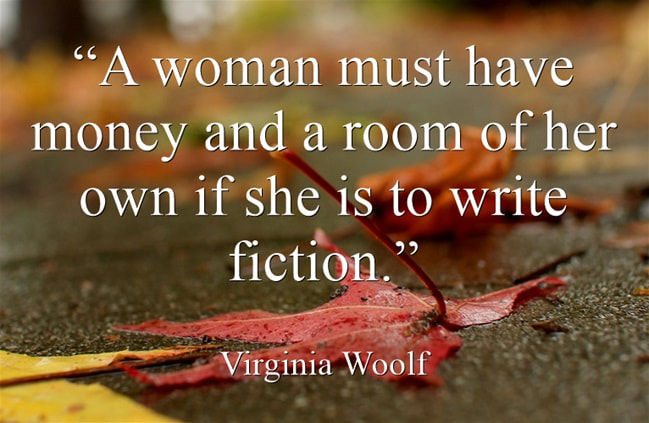
I’ve long imagined Woolf’s room-of-one’s own theory to be true but never found myself in a position to test it. I never pictured myself living a literary life. Until Hambidge.
Don’t get me wrong. I am a writer. At least, that’s a big part of how I make a living in the day-to-day work world. I write grants to fund public health initiatives. In most people’s eyes, including my own, it’s admirable work. I’m proud when I tell people that recently my organization was awarded a $5+ million grant to reduce death rates of pregnant women and infants in low-income, high-risk neighborhoods. This feeds my ego and my sense of professional worth. But here’s the thing: It doesn’t feed my soul.
After work each day, I go home to the man who feeds my heart. We’re empty nesters, Rice and I, and he supports my need for time and space to create. That feeds my soul, having time to think and create. Quiet time. Stillness. The thing is, Rice is gregarious. In the soft of morning, he opens and closes doors with gusto. His slippers shuffle along the floor, and his bottle of V8 makes a glug-glug sound as he pours from it. I can hear his toast popping, the scrape of his knife as he butters it, the crumple of the cereal wrapper as he struggles to open it.
His slippers shuffle again, and then his chair scrapes against the floor. The newspaper crinkles as he battles to open that. From my office, I can hear him chewing, honest to God I can, and I catch the cadence of his breathing between bites.
Why can’t I concentrate?
I bite my tongue, not wishing to bark at this sweet man for having the audacity to live out loud in his own home. Meanwhile, I fume at the keyboard, unable to focus on any kind of story line other than one that involves silencing my husband. I can see the headline in my mind: Woman Arrested for Drowning Husband in Cereal Bowl.
Thankfully, Mary Hambidge provided me a room of my own for a needed March respite. During my Hambidge residency, the Firefox cabin became my own private writing studio for one glorious week. (Photos above are from the Hambidge website.)
Foxfire smelled musty and timeworn. Walking its uneven dark wood floors reminded me of visiting my Grandma Pearl’s old house when I was little. In Firefox, a gas heater warmed the front living area, which housed a bed, an old upright piano, a work table, and a functioning fireplace. Off the back room I found the bathroom, its tub basin stained but clean. On the other side of the back room was a kitchenette, its appliances white and small, its stove’s burner rims lined with foil. Furniture throughout Firefox was well past the stage of gently worn.
What more can I tell you? I loved it.
I wasn’t certain that I would. While I’d lusted for a Hambidge residency for years, I still had last-minute jitters. Would the isolation drive me mad? No TV or Internet. No cell phone service. How would I fill the time? Working solely on my creative writing, 24/7? You know what? I did indeed do that. Even when hiking or dining or—yawn—napping, the work was always with me. That’s the essence of Hambidge. The work and the artist and nature coexist. The stillness melds them all together to breathe, to rest, to explode...all in due time, not time dictated by the outside world.
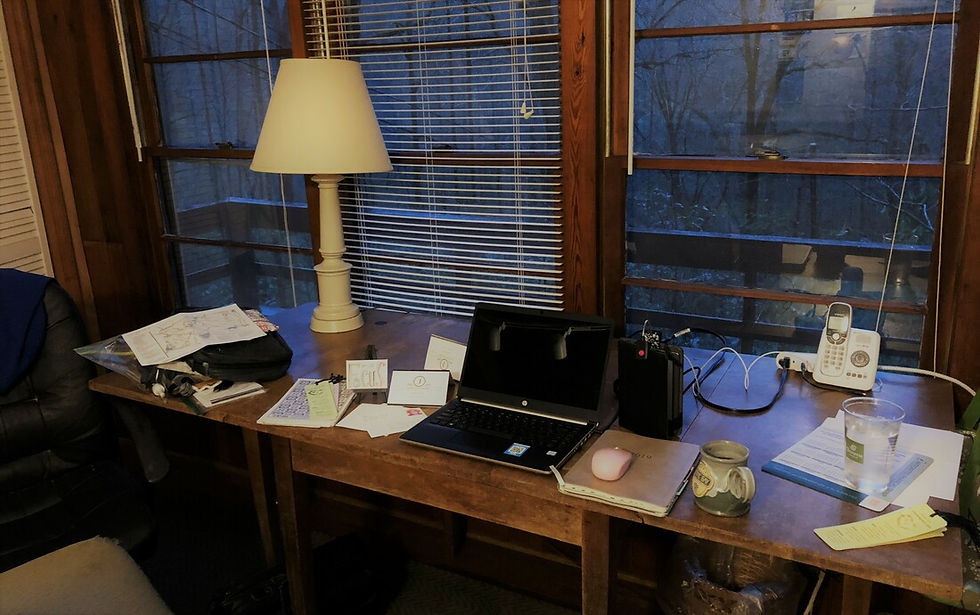
My favorite place to work in Foxfire was at the backroom table overlooking a deck and the woods. Behind me was a wall-to-wall bulletin board, the old kind with pin tacks for plastering note cards with plot points and character arcs in sequence. There are software programs that do that for you, but I found the tactile act of writing and tacking up the cards oddly satisfying. Sometimes I’d break to walk outside, or to write personal letters to some writer friends and one to some people in the industry whom I don’t know but I admire. Then I’d repeat, eventually hopping into the shower as evening drew near.
While in residency at Hambidge, only three things are mandatory: (1) to join the other artists for the nightly vegetarian meal. (2) to gather around the table before the meal, hand-in-hand, for a moment of silence, and (3) to help set up for the meal and clean up afterwards. Those requirements sounded fair yet frightening. I mean, what if the other residents could tell that I was an imposter, someone who’d slipped through the application process and now sat among the real creatives? What if the other residents were those kinds of artists, you know, the types who are snooty and condescending and full of themselves?
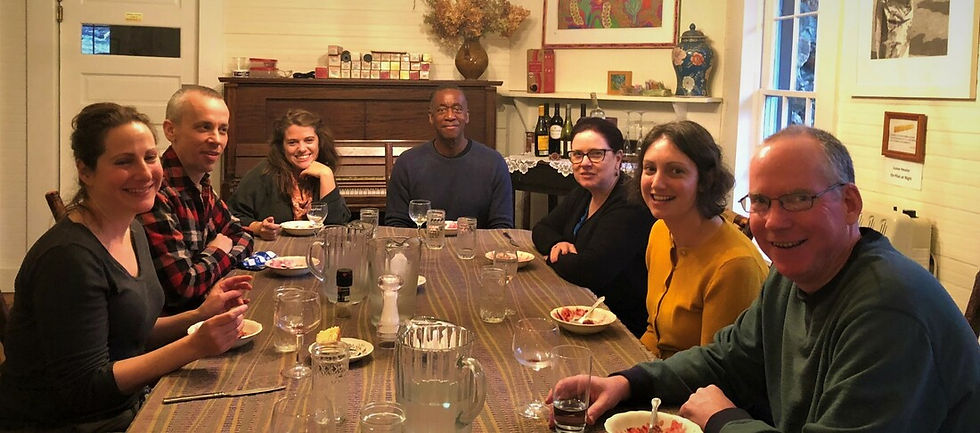
My anxiety eased as I got to know the other residents—three writers (one literary, one contemporary, one culinary), four artists (including a photographer and a ceramicist), one arts administrator (she designs sets and produces plays in Atlanta), and one composer (he’s writing a symphony based on the poetry of A Child's Garden of Verses by Robert Louis Stevenson). They were happy to talk about their work...or to listen to someone else do the talking. It was refreshing, not feeling the need to fill the air with my own voice in order to be noticed or taken seriously. Angeles, a mixed-media artist, described it this way: “Pretty much, we’re all a bunch of introverts who come here to focus on our work without so many outside distractions.”
When asked what I was working on, I’d reply, “Commercial fiction.” That was generally met with a nod, but one of the artists, Simen, pressed me. “What does that mean?” What indeed? I’ve never been one of those writers who thinks my work transcends genre. Still, how to define it? It’s not romance or sci-fi. It contains mystery elements, but I wouldn’t call the book itself a mystery. Certainly it’s not a thriller. I don’t think it’s chick lit either.
“I’m writing a novel,” I finally said. “It’s not historical fiction, and it’s not exactly literary.” I paused, struggling with how to describe it better. I shrugged. “I’m no Hemingway. I guess what I’m writing could be considered contemporary fiction.”
Simen nodded. He got it. “Don’t put yourself down,” he said.
I liked that. Simen wasn’t telling me that my work was brilliant or that he had to see it. He was simply affirming my worth as a writer. In a world where creatives often make a pittance and our worth as professionals can get confused with what’s in our bank account, he was sending a message: My writing is important...because it’s important to me. I so needed to hear that, if only to drown out so many contradictory messages I’ve re-played in my mind through the years.
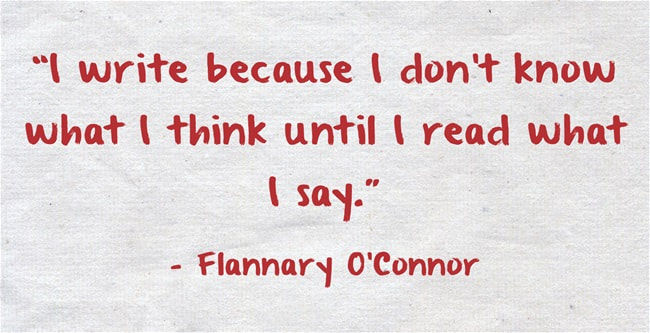
“All you care about is your writing.” Those words came from my own mom, back when my kids were little and we’d just relocated to Atlanta. I’d had several op-eds published in The Atlanta Constitution. I was excited, trying to find my voice as well as places to share it. I had to sneak in writing time during kids’ naps or by getting up in the still of morning, before other duties beckoned and I could no longer hear myself think. Yes, I was tired. Maybe over-stretched at times. But isn’t every working mom?
My own mom’s words stung. They may have been shared as just a throw-away comment, something she thought one second and forgot the next. Still, they stung. And they stuck.
I can’t blame those words in themselves for causing me to take such a long break from creative writing. I can say they unequivocally fed the beast—the constant, nagging self-doubt. Was I neglecting my family? Chasing a hopeless dream? Telling trivial stories that no one else cared about? Even today, I sometimes ask myself, does the world really need another op-ed piece? Or painting? Or blog post?
Does the world really need more art?
My gut reaction: “Maybe the world doesn’t need more art, but I do.” Yet on further reflection, I’d like to edit that statement: “The world does need more art. Absolutely. For all our sakes.” Drawings, sculptures, written works. Photographs, textiles, performances. Color, value, space. Texture. Sound.
Without art, how are we to learn the parts of our past that don’t get put into history books? Without art, what will stimulate creativity and conversation? How will we learn empathy and problem-solving? What will prompt us to expand our ways of thinking?
If the world doesn’t need artists, creators, and thinkers, then the world doesn’t need a place like Hambidge. The beauty of its winding paths and gentle streams is wasted. The sounds of woodland creatures and rustling leaves don’t need to be heard. Nature’s quiet might as well be filled with blaring horns, excess chatter, cell phone pings, piped-in music, pop-up messaging. Noise and more noise. (Nature's quiet as captured at Hambidge, below.)
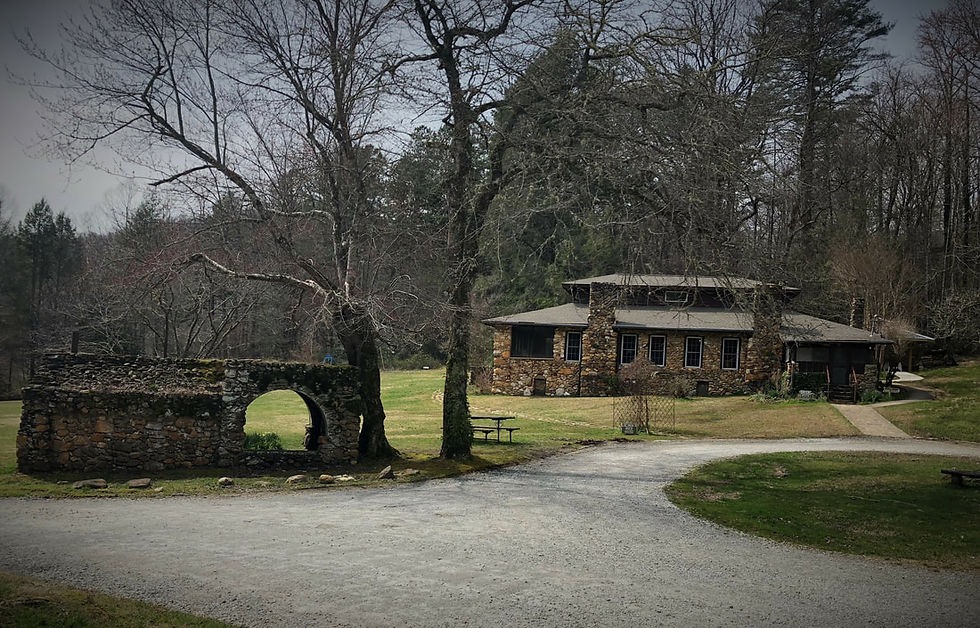
I’m back home now. The morning’s still and dark. Rice is asleep, but the birds are astir. I enjoy their songs as I sit to write. My mind wanders back to Hambidge.
You know that little gray bird I mused about early in my stay? It was a white-breasted nuthatch. Google told me that, after I got back to the noise and the normal of everyday life, where I have WiFi to help me think. At Hambidge, I had to rely on my own puny brain, a laptop, some hard-covered reference books, and the wonders of nature...the different textures and greens in the moss, the musky scent of the woods, the satisfied warbles from the birds at the feeder.
I loved watching those birds...the nuthatches, thrushes, finches, and robins. A single cardinal visited one day toward the end of my Hambidge residency. Its feathers were an incredible red. As a writer, I’m frustrated that I can’t describe the bird’s utter beauty. I tried to grab my cell phone to capture a photo, but by the time I did, the cardinal was gone.
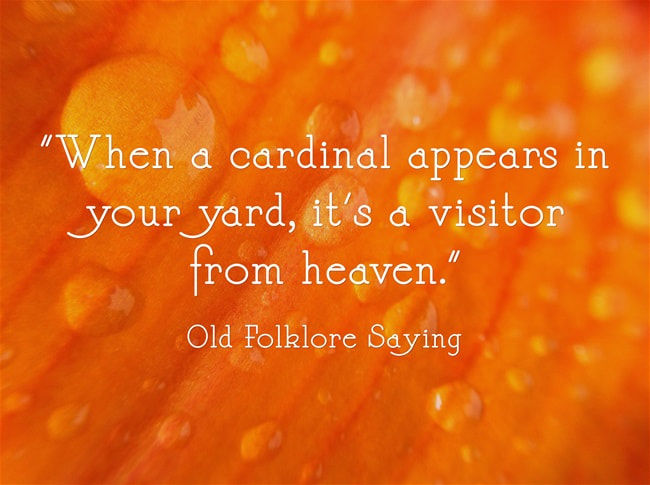
I’m not sure I believe that cardinals are angels. I’d like to. That would allow me to believe I’d caught a glimpse of Mary Hambidge, stopping to remind me that the state of awe is all around me. Right? That would be sort of cool, actually. Better yet, although perhaps equally woo-woo, what about this? What if that cardinal was my mother’s angel, stopping by to share a thought or two.
“Oh, for Pete’s sake!” (I can almost hear her voice.) “I never meant for you to stop the creative writing. I just wanted to see you balance it better. With family and friends. And fun.”
You know what else she would have added?
“Now get off your ass and get to work!”
What more can I tell you? I’m in a state of awe (thank you, Mary Hambidge!). Creative ideas are bouncing off the walls of my head. The fiction files on my computer beckon.
I’ve got me some writing to do.
Cheers! J









